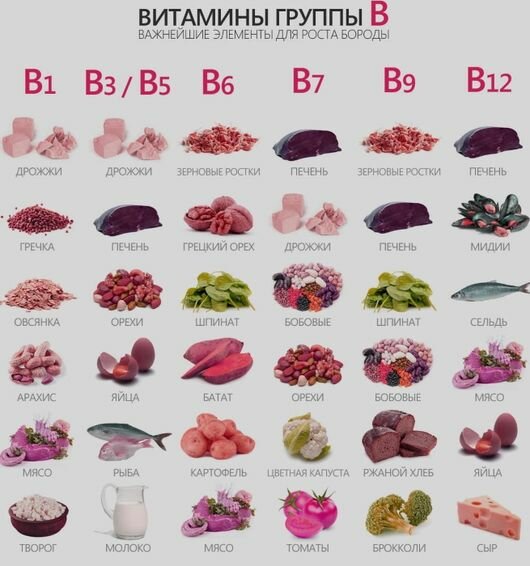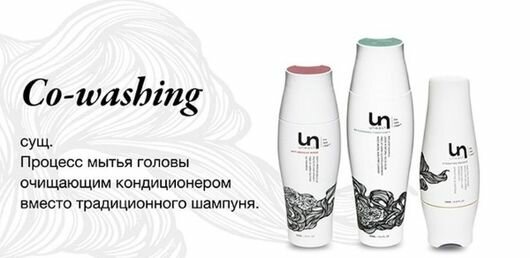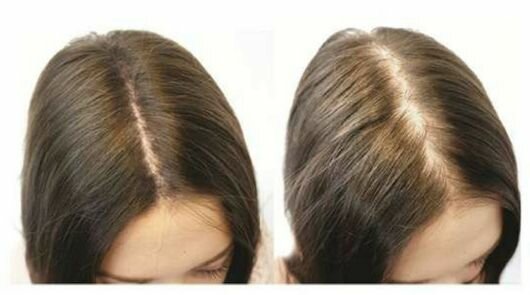The procedure for hair extensions allows you to increase their density and length. Capsule technology is based on the use of capsules made from a variety of components from keratin to glue.
- What is capsule building
- Types of capsules
- Advantages and disadvantages
- Is capsule build-up harmful
- Optimal hair extension
- Types of extensions
- The optimal number of strands
- Varieties of capsule building
- Hair Care After Capsule Extensions
- Correction
- How to remove hair extensions
- Contraindications for capsule building
- Consequences after withdrawal
- How much is capsule building
- Is it possible to grow hair at home
- Reviews
- Which is better: capsule or tape extension
- Video about capsule hair extensions
What is capsule building
Hair extensions using capsules is done hot and cold. A donor, which has a capsule at the base, is attached to each natural strand. By heating this capsule with an iron, it joins with a natural lock of hair when using hot technology. The cold method is based on the use of glue. 

Donor locks remain unchanged on the hair for 3 to 4 months. In the future, their removal or correction is required, which will prevent the deterioration of the appearance of the hairstyle due to hair regrowth. Removing the capsules occurs with the help of forceps and a solution that breaks down the adhesive layer. At the same time, natural hair is not damaged.
Types of capsules
For the procedure, capsules of various types are used:
-
keratin capsules are made from a natural component that is part of the hair structure . They differ in color, which allows you to choose a shade similar to the natural tone of the hair. Such capsules are harmless to natural strands and do not give a feeling of heaviness;


- Microcapsules made of polymer are small in size . They are formed with forceps and heated with a glue gun. Due to their lightness, they are absolutely not felt in the hair. However, for full building, you will need more data capsules than standard size capsules;
- resin capsules are made of organic resin , which is heated by a heat gun. The composition of the refractory resin also includes natural hair protein – keratin. Such capsules adjust to the shade of the hair;
- adhesive capsules are attached to natural strands by cold gluing . They have the shape of a miniature adhesion, which allows you to work out hard-to-reach areas. However, these capsules whiten when dried, therefore, are not suitable for dark hair.



 Do not miss the most popular article in the rubric:
Do not miss the most popular article in the rubric: Fashionable hair colors this year. Photos and trends of hairdressing.
Advantages and disadvantages
The benefits of capsular hair extensions include:
- lack of restrictions on the length of hair;
- universality for any type and shade of hair;
- lightness and invisibility of capsules, allowing you to give your hair a natural look;
- lack of sensation of a foreign object on the scalp;
- the ability to resort to dyeing or coloring hair;
- the possibility of hot styling without damaging the capsules;
- the stability of the capsules to temperature extremes, which allows you not to abandon the sauna, solarium and thermal grooming procedures;
- lack of need for frequent correction.


Capsule hair extension gives the hairstyle splendor, allows you to add hair to any desired length
Capsule extension has several disadvantages:
- oils, lipid fats and acids lead to the gradual destruction of capsules, so you should abandon the use of cosmetic products for hair containing these components;
- the need for frequent combing to prevent tangling of the capsules;
- rejection of massage brushes for combing and the need to use combs with frequent cloves;
- high cost of the procedure compared to other extension methods.
Is capsule build-up harmful
Capsule hair extensions are not harmful when observing the technology of the procedure. The basis of hot techniques is the use of harmless organic components. When they are heated, the master must observe a certain temperature regime so as not to cause thermal damage to the hair. For the same purposes, the temperature exposure time was determined.
The cold extension technique allows you to refuse to heat the hair. However, an adhesive consisting of chemical components is used for building. To make the procedure safe, the size of the adhesive capsule should not exceed the size of rice grain.
Also, the master must correctly determine the size of the strands, which will avoid an increased load for natural hair under the weight of the donor. It is equally important to maintain optimal hair tension.
Optimal hair extension
When building, the recommended length of natural hair should be more than 0’8 inch. This is due to the need not to harm the hair. With a shorter length, the donor strand creates a high load on young hair, which is in the stage of active growth. Also, a hair length of less than 0’8 inch does not allow the master to create good tension in order to gently fix the capsule.
As a result, donor strands extended to shorter hair will not last long. This procedure can lead to damage and loss of natural hair.



 Do not miss the most popular article in the rubric:
Do not miss the most popular article in the rubric: Fashionable bob haircut for medium hair. Photo, front and rear view.
Types of extensions
| Type of strands | Characteristic |
| Slavic | This type of hair is considered the most high-quality and expensive. It does not lend itself to chemical treatment. When washing, dyeing and styling, such hair remains soft and shiny. They are not tangled and easy to lay. With the correction of building, it is enough to replace the capsules using Slavic hair repeatedly, which saves on the procedure. |
| Asian | The cost of such hair is the lowest, due to the short life. Asian strands are treated with silicone compounds, making them look smooth and silky in the store. However, when washing the hair, the silicone is gradually washed out, due to which the hair becomes stiff and very confused. |
| European | These strands are widespread and affordable. They undergo bleaching and staining, which allows you to create a wide range of shades. The term of their use is up to 1 year, during which the hair remain s smooth and saturated in color. |
| South American | Such hair belongs to the middle price category. Their advantage is the lack of chemical treatment. To prevent tangling of hair, they are formed in strands corresponding to the location of the cuticle. For staining, a gentle dye is used, so the natural shine of the strands is preserved. The service life of this type of hair is limited to 1 year. |
The optimal number of strands
| Length | Volume | ||
| Thick | Medium density | Thick | |
| Short up to 3’9 inch | 140 strands | 160 strands | 200 strands |
| On the shoulders | 120 strands | 150 strands | 180 strands |
| On the shoulder blades | 100 strands | 140 strands | 170 strands |
| Long | 50 strands | 100 strands | 120 strands |
Varieties of capsule building
Capsule hair extensions according to Italian technology are performed by thermal heating of keratin capsules located at the base of donor strands.
The procedure is performed in 3 stages:
- The specialist separates a thin strand of natural hair and creates tension.
- Having retreated 3/32 – 6/32 inch from the hair roots, the master applies a donor strand with a keratin capsule.


- With forceps heated to a temperature of no more than 180 °, the capsule is firmly pressed to natural hair for 2 seconds.
The procedure is time consuming and lengthy. Depending on the desired density of hair, it can take from 2.5 to 4 hours.
This technology has significant advantages over other building methods:
- safety, since keratin does not injure the cuticles of natural hair;
- creation of flat and invisible on the part of the mounts;
- tight attachment of the capsule, eliminating the possibility of combing it out and peeling off;
- hypoallergenic keratin;
- the ability to build in the area of parting, bangs or temples;
- staining is not prohibited after the procedure.
The disadvantages of the procedure:
- correction may take up to 5 hours;
- do not perms or straighten;
- the procedure cannot be performed on damaged and brittle hair, as well as after chemotherapy.
English technology build-up is hot. The length of the hair during extension should be at least 2’4 inch. To attach the donor strands to natural ones, a glue gun is used that heats the resin capsules. 

Resin bindings securely fix donor strands in natural hair.
The benefits of the procedure are:
- the size of the resin capsules is comparable to a tiny grain, which makes hair extensions comfortable;
- the procedure takes no more than 3 hours;
- resin does not provoke allergies;
- the master forms the donor strands manually, taking into account the characteristics of the client’s hair.
The disadvantages of English building include:
- the inability to use products containing oils, as well as the temperature effects of styling devices;
- possible tangling of hair;
- the impossibility of building in hard-to-reach areas – at the temples and in the bangs.
Capsule hair extension by the Spanish method occurs without exposure to high temperature. Two-component glue is responsible for fixing donor strands. The master isolates the natural strand with a protective pad, and then glues the donor. 

This technology has several advantages:
- a tiny drop of glue does not complicate combing;
- there is no need to use heating devices;
- it remains possible to use oil products for hair, as well as visits to the solarium and bath;
- the cost of technology is lower in comparison with hot methods.
The procedure has disadvantages:
- prolonged building and correction of more than 4 hours;
- hair length at the time of extension should be from 3’9 inch;
- glue capsules whiten over time and become noticeable.
Cold building is characterized by the use of glue that adjusts to the shade of the hair.
The procedure consists of 3 stages:
- washing hair with a deep cleansing shampoo;
- fixing on the hair of donor strands with glue and cold tongs;
- use of finish fixer.
This extension has the following advantages:
- locks are not combed out;
- lower cost compared to other methods;
- There is the possibility of toning and dyeing hair.
The disadvantage of this procedure is the complexity, which is why the time required is more than 4 hours. In addition, the probability of damage to the hair with the adhesive capsule when removing it is high.
With ultrasound building, keratin capsules are used. However, their heating is carried out not with forceps, but with ultrasound. The master attaches the donor to the selected natural strand. The capsule is prepared in advance. 

Due to this, such an increase is:
- most secure;
- preventing the loss of both natural and extended hair;
- easy to care;
- fast, since
the work takes about 2 hours.
The main disadvantage of the procedure is the high cost. There are also restrictions on the length of natural hair – at least 3’9 inch.
Microcapsule building is based on Italian technology. The difference is the size of the capsules and the thickness of the strands. Microcapsules 4/32 inch in size are invisible and are not felt in the hair. During the procedure, the master attaches the strands using forceps. At the same time, their number increases due to the miniature size. 

This technology has advantages:
- an opportunity to work out a zone of temples, parting and bangs;
- hair does not tangled;
- the capsules hold most firmly due to the lightness of the strands.
The procedure takes significantly more time due to the large number of attached donor strands. Another disadvantage is the complexity of the correction, which can last up to 6 hours.
Hair Care After Capsule Extensions
When caring for hair extensions, it is important to follow the recommendations:
- hair can only be washed after combing;
- the teeth on the comb should be at frequent intervals;
- shampoo should not contain fatty acids;
- after washing, it is better to dry your hair naturally;
- it is impossible to influence capsules with a curling iron or ironing.



 Do not miss the most popular article in the rubric:
Do not miss the most popular article in the rubric: Fashionable bob cut for short hair. Photo, front and rear view.
Correction
Capsule hair extensions need correction every 4 to 6 months. The procedure consists in applying the solvent to the capsules and then splitting them with forceps.
The procedure is harmless to natural hair.
Donor strands after correction can be increased repeatedly by replacing the capsules. Correction will take 1.5 to 2 hours more time than building up.
How to remove hair extensions
Solvent gels are used in the salon to remove hair extensions. After their application, the weakened capsules are easily broken with forceps and removed. This procedure can be done at home if you purchase a tool and a flow foot for dissolving keratin. It will cost less than salon services, but it will take longer to take off the capsules one by one. 

An analogue to the revomer can be fat or oil. These components weaken the capsules, but they must be kept for 3-4 hours. After the damaged keratin is easily removed when heated with an iron. This method is traumatic for the hair, since the iron must be applied to the strand for 1 to 2 minutes. Keratin residues tangled in the hair can be removed with a comb comb.
After removal, it is important to restore the structure of the hair. This requires nutritious masks.
Contraindications for capsule building
The procedure has a number of contraindications:
- alopecia;
- oncological diseases;
- scalp diseases;


- arterial hypertension;
- regular headaches and migraines.
Consequences after withdrawal
Capsule extension leads to negative consequences for the hair if the removal is performed incorrectly or untimely.
These results for hair include:
- weakening and thinning;
- porosity;
- fragility;
- dropping out;
- dull color;
- cuticle damage;
- dryness;
- confusion.
How much is capsule building
The average cost of the procedure is from $ 68 – $ 204. The price depends on the type of hair extensions, as well as the selected volume and length. The cost is affected by the capsule extension technology. The most expensive are Italian, ultrasonic and microcapsule techniques. They are the most complex in execution and require high professionalism of the master.
Is it possible to grow hair at home
Hot home technology requires warming tongs, strands and a thin comb. Using a comb, you must perform a neat circular parting.
After all the hair parting should be divided into identical strands in turn, attaching artificial ones to them. The forceps that hold the capsules will help to do this. Similarly, the entire area of the head should be divided into circular partings, gradually filling it.
Cold building is also performed on circular partitions. The difference is the use of a separator, which locks the strands. Donor strands are attached with glue, which allows not to use forceps.
Reviews
Reviews about capsule building are mostly positive. Girls who resorted to this service, note the ease of combing the extended strands. The effect of the procedure lasts for a long time – at least 4 months. Discomfort and weighting after its implementation is not noted. Donor strands are easy to style and hold their shape well. 

When stained, hair extensions do not differ in shade from natural hair.
Which is better: capsule or tape extension
When tape extension is used wide donor strands, which are fixed with polymer glue. This technology is much simpler than capsule technology and requires less time.
However, the ribbons are felt in the hair and may be noticeable, which is less comfortable. In case of tape building, correction is required much more often – every 1 – 2 months, and the cost of the procedure is slightly inferior to capsular building – about $ 136.
The capsule extension procedure allows you to maintain healthy hair. She aims to create a beautiful hairstyle without discomfort.
Video about capsule hair extensions
How is capsule hair extensions carried out:
Pros and cons of capsular hair extensions:





